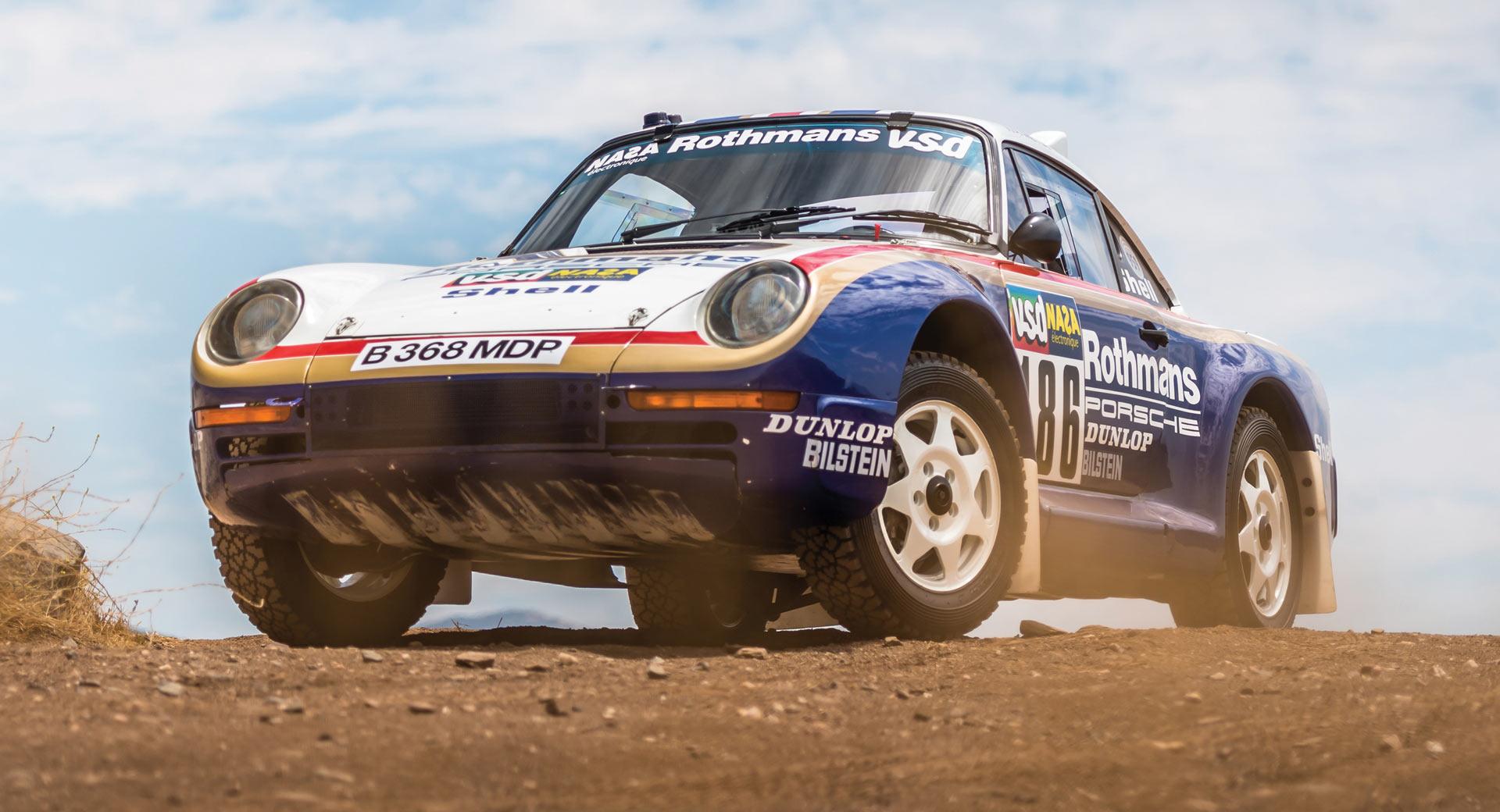1986 Porsche 959 Paris-Dakar race car

The descriptions of the Classic Cars in the Directory were partly generated or supplemented with the help of artificial intelligence (AI). The content may occasionally not always be entirely accurate or factually correct despite careful checking.
The Porsche 959 Paris-Dakar race car of 1986 was a technological marvel. It was built to compete in one of the toughest off-road endurance races in the world – the Paris-Dakar rally. The 959 was a masterpiece of engineering, featuring cutting-edge technology and unparalleled performance.
The car was powered by a 2.85-liter horizontally opposed six-cylinder engine, producing 450 horsepower at 6,500 rpm. This twin-turbocharged engine was capable of propelling the 959 from 0-60 mph in just 3.7 seconds, and had a top speed of 197 mph. The engine was constructed primarily from lightweight materials such as magnesium and titanium, which kept the overall weight of the car low, improving its agility and handling.
The 959's transmission was a six-speed manual, featuring a unique racing clutch that allowed for rapid gear changes. The all-wheel-drive system was advanced for its time, featuring a torque-splitting differential that could vary the amount of power going to each wheel based on road conditions. The car also had a four-wheel steering system, which improved its handling and allowed for greater maneuverability on the course.
The suspension system was also advanced, featuring adjustable ride height, spring rates, and damping. This allowed for precise tuning of the car's handling characteristics, making it well-suited for the varied terrain encountered in the Paris-Dakar rally.
The body of the 959 was constructed primarily from lightweight composites, including Kevlar, carbon fiber, and Nomex. The car's aerodynamic design was created using wind tunnel testing, resulting in a drag coefficient of just 0.31. This helped to improve the car's performance, fuel efficiency, and top speed on the long stretches of desert roads.
The 959's interior was fitted with a roll cage, racing seats, and a minimalist instrument panel. The dashboard featured gauges for fuel level, water temperature, oil pressure, and turbo boost pressure. The car also had a fire suppression system, which was essential for ensuring the safety of the driver and navigator should a fire start within the engine compartment.
In conclusion, the Porsche 959 Paris-Dakar race car of 1986 was a technological masterpiece, boasting advanced performance and handling features that were ahead of their time. It was a true testament to Porsche's engineering prowess and their commitment to pushing the boundaries of automotive technology. The 959 remains one of the most iconic rally cars ever built and a true legend in the world of motorsports.
Milestones
- Development of the Porsche 959 began in the early 1980s with a goal of creating a high-performance sports car for both road and rally use. - The 959 was officially unveiled at the 1985 Frankfurt Motor Show and immediately garnered attention for its advanced technology and performance capabilities. - In 1986, Porsche entered the 959 in the grueling Paris-Dakar rally, a demanding off-road race that covered over 6,000 miles through rough terrain in Africa. - The 959 was modified for rally use with upgrades such as increased ground clearance and reinforced suspension and drivetrain components. - Despite being a relatively untested car, the 959 performed well in the race and ultimately finished first in its class and sixth overall. - Porsche's success in the Paris-Dakar rally helped establish the 959 as a world-class rally car and solidified its reputation as a high-performance sports car brand.Technical
- The Porsche 959 Paris-Dakar race car was developed by the German sports car manufacturer Porsche, and made its debut at the 1986 Paris-Dakar rally. - The car was designed and built specifically for off-road racing, with a reinforced chassis, increased ground clearance, and specialized suspension and braking systems. - The 959 PD was powered by a 2.85-liter, six-cylinder, twin-turbocharged engine, which produced a maximum output of 450 horsepower and 369 pound-feet of torque. - The car had a top speed of 200 mph, and was capable of accelerating from 0 to 60 mph in just 3.7 seconds. - The 959 PD featured a full-time all-wheel drive system, which provided superior traction and stability on rough terrain. - The car also had a unique sequential gearbox, which allowed for lightning-fast gear changes and helped to optimize power delivery throughout the race. - To reduce weight and improve aerodynamics, the 959 PD was outfitted with a lightweight carbon fiber body and a large rear wing, which provided downforce to improve handling and stability at high speeds. - The car was raced by the Rothmans Porsche team at the 1986 Paris-Dakar rally, and was piloted by drivers René Metge and Dominique Lemoyne, who ultimately won the race in a time of 32 hours, 1 minute, and 9 seconds.



